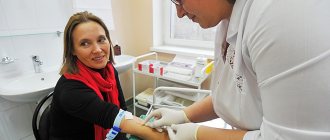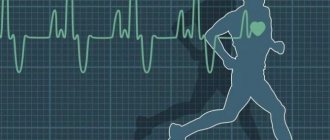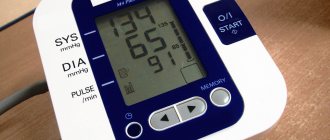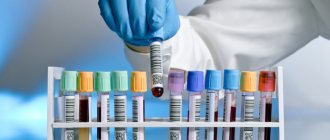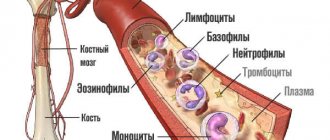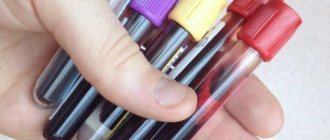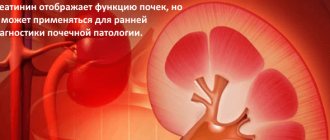What is pulse
Pulse is the heart rhythm or the reaction of the vascular wall to the work of the heart, its contraction and stretching. As a result of the blood wave generated by the myocardium under a certain arterial pressure, oxygen is delivered to the organs and tissues, the emptying and filling of the veins is regulated, resistance arises in the arteries, which helps red blood cells and electrolytes penetrate through the capillaries, “feeding” the organs and tissues with nutrients.
A normal pulse has six main characteristics that significantly help doctors in diagnosing the condition of the heart muscle and the preservation of its potential. This:
- rhythm - a cyclic change of myocardial beats per minute, causing oscillations of the arteries;
- pulse rate - the number of such beats per minute;
- the magnitude of cardiac impulses – characterizes the elasticity of the arteries;
- tension is the force that can be applied to stop blood flow in the vessels;
- filling - shows the volume of blood released into the artery during cardiac contraction;
- the shape of the pulse oscillations - depends on the vibration in the intervals between contractions.
These indicators are enough to understand what a normal pulse should be in a healthy or sick person of different ages.
How to measure your pulse?
The pulse is measured by placing your fingers on the artery on the wrist, since the vessels there are located close to the skin. In order to obtain accurate values , it is advisable to measure the pulsation of two wrists.
If heart rhythm disturbances are not observed, then you just need to calculate the pulse for half a minute and multiply this indicator by two. If the beats of the heart muscle are inconsistent , then it is best to count the number of pulse waves in 60 seconds.
If there is an existing need for diagnostics, for example, if serious illnesses are suspected, it is easy to measure the pulse thanks to other examinations - ECG, Voltaire mount.
In addition to the above methods, a treadmill test is also used, when the performance of the heart muscle and blood pulse are recorded by an electrocardiograph while an adult is moving on a treadmill. This test can show how quickly the cardiovascular system returns to normal after exposure to stress.
Normal heart rate for a healthy person
The very concept of a normal human pulse contains the optimal number of heart beats per minute. But this is not a constant value; it is influenced by gender, age, profession, and many other external and internal factors. For convenience, there is an average standard indicator. It amounts to:
- 110 -150 beats/minute in the fetus and newborn;
- 130 – in infants;
- 100 – in children;
- 85 – in adolescents and young men;
- 70 – in adult men and women;
- 55 – in the elderly.
The indicators are average, normal for adults, for example, the range is wide: from 60 to 100 beats per minute.
In children
Newborns have the lead in heart rate, reaching 150 (and sometimes 170) beats/minute. This is explained by the intensive growth of the child’s body, its adaptation to the new environment, high needs for nutrients, oxygen, and the maximum level of metabolic processes.
Even after a year, the heart rate remains at the level of 130 beats/minute, and only by the age of six does it approximately “fit” into standard norms. Moreover, the rate of age-related normalization of the pulse directly depends on the general health of the child, the climatic conditions in which he lives, diet, physical activity, and mental development. The more energy a growing body needs, the faster its heart beats.
Pulse: influence of various factors
Changes in heart rate occur under the influence of external and internal factors. The number of heart beats per minute can be affected by a person’s age, gender, physical and psycho-emotional stress, air temperature, body temperature and much more.
Age
The pulse at rest or at night during sleep, depending on the age of the person, differs significantly. In newborns, the heart rate is the highest - over 130 beats/min. This is explained by the fact that the heart is small and must contract more often to supply the whole body with blood.
As you grow older, your heart rate becomes much lower and by the age of 18 the normal heart rate is 60-90 beats/min. This frequency persists for many years with slight fluctuations. The changes observed in older people depend not only on age, but also on the presence of existing diseases.
Floor
The heart rate at rest in the female half of the population is 8-10 beats higher than in men. These differences are also explained by the smaller heart volume, less ventilation and blood volume. Female athletes may have the same heart rate as non-athletes.
Physical training
Regular sports activities help increase heart volume, as well as improve the functioning of the cardiovascular system. The heart rate of people involved in sports is lower than that of untrained patients. A more pronounced decrease in heart rate is recorded during exercises to develop endurance (cycling races, skiing, long-distance running). Strength training also helps lower heart rate, but to a lesser extent.
Pregnancy
In pregnant women, a slight increase in heart rate is not a pathology unless it is associated with other disorders.
Body temperature
There is a direct relationship between body temperature and heart rate. An increase in temperature by one degree increases heart rate by about 10 beats/min. This acceleration is explained by the body’s ability to thermoregulate. An increased heart rate helps it release heat faster through the lungs and skin.
Air temperature
Under other normal conditions, the resting heart rate may increase with increasing ambient temperature. Indicators of +18 – +22 °C are considered optimal for humans. When the temperature rises above 29 °C, the resting heart rate becomes higher. The body needs this to normalize body temperature.
Mental and emotional stress
The lowest heart rate is observed in a person in the morning, immediately after sleep. Further, during the day, depending on the intensity of mental activity or emotional stress, the frequency with which the heart works can increase or decrease. As a result, by the evening the heart rate becomes higher than in the morning.
If the difference between the indicators in the morning and evening hours does not exceed 7 beats/min, the daytime mental and emotional load is considered small. Deviations of 8-15 beats/min indicate an average load, and a difference of more than 15 indicates high loads.
Diseases
Heart rate can be affected by various pathological conditions of the human body. Bacteria, viruses, their metabolic products, and various toxins have a strong effect on the body every day, causing an increase in heart rate. Most often, deviations from the norm are observed in the following diseases:
- anemia;
- heart pathologies;
- brain injuries;
- dysfunction of the endocrine glands;
- poisoning;
- infectious and inflammatory processes.
Other factors
An increase in heart rate compared to normal in adults and children can occur after eating. Smoking and drinking caffeinated drinks affect your heart rate. The latter have a stimulating effect on the body, so it is forbidden to drink coffee or smoke before measuring the indicators. Deviations in heart rate can be observed when taking various medications.
What is the normal pulse
Checking your health using your heart rate is very simple: go up to the third floor and measure your indicators. Up to 100 beats/minute is excellent form, 115-120 - you need to take care of yourself, everything above these numbers is critical and requires visiting a doctor for examination. But the normal pulse of a healthy person is very different depending on the circumstances offered to us:
- at rest - this is exactly the heart rate that is considered to be the standard (60-80 beats/minute);
- after eating - the pulse may increase by 10-15 units (food puts pressure on the diaphragm), any excess of these limits indicates a pathology of the digestive tract or other body system;
- during training for weight loss (fat burning) - there is Karvonen’s rule, when the target fat burning zone of 50-80% of the maximum heart rate is considered the norm. In this case, the maximum permissible value is calculated as the difference between the abstract number 220 and the person’s age. For example, for a 40-year-old man, this is (220 – 40) = 180. Then 50% of 180 = 90, and 80% of 180 = 144. This means that a pulse in the range from 90 to 144 will be considered normal when burning fat. explained by the individual characteristics of a person, his state of health, which is why a medical examination is necessary before training;
- when running - as when swimming at speed or other similar loads - the heart rate is calculated using a similar formula, only the percentage is slightly different: 70-85% of the maximum. For example, a 30-year-old man has a maximum permissible heart rate (220 - 30) = 190 beats/minute. Therefore, 70% of it = 133 and 85% = 162. Training is considered safe and effective when this range is maintained.
- during heavy physical activity - normal heart rate ranges from 50 to 70% of the maximum, which is calculated as the difference between the abstract number 220 and the person’s age.
Physical activity can vary in intensity, and depending on this, normal heart rate indicators will also change.
Necessary examinations
The list of events is selected by doctors of different specialties. Approximate diagnostic scheme:
- Assessment of complaints, collection of anamnesis. To identify specific symptoms and determine the clinical picture.
- Measuring heart rate and blood pressure. An integrated, daily approach is also used as the most accurate and allows one to study the heart rate level over time.
- Electrocardiography. With load tests. As a rule, they are carried out with great caution, especially in older women.
- Echocardiography. Ultrasound diagnostic technique. Gives a visual picture of the condition of the organ.
- Ultrasound of the kidneys and pelvis if indicated.
- Blood tests (biochemical, hormone, general) and urine tests.
- Assessment of neurological status using routine methods (checking reflexes, etc.).
- Angiography.
- If necessary, MRI and CT.
Such methods are often sufficient. The list can be expanded or narrowed, depending on the results of studies already conducted. You need to be patient: complex cases are sorted out within 1-2 weeks or even more.
Heart rate table by age
Normal heart rate values are different under different conditions and in people of different ages. They are shown in the table.
| Age | Minimum-maximum beats/minute | Average standard |
| Children and teenagers | ||
| First month of life | 110-170 | 140 |
| First year | 102-162 | 132 |
| Up to 2 years | 94-155 | 124 |
| Up to 6 years | 86-126 | 106 |
| Up to 8 years | 78-118 | 98 |
| Up to 10 years | 68-108 | 88 |
| Up to 12 years | 60-100 | 80 |
| Up to 15 years | 55-95 | 75 |
| Under 18 years old | 60-93 | 75 |
| Men | ||
| From 18 to 40 | 60-90 | 75 |
| Up to 60 years old | 65-85 | 75 |
| Over 60 | 70-90 | 80 |
| Women | ||
| From 18 to 40 | 68-99 | 79 |
| Up to 60 years old | 75-100 (climax) | 80 |
| Over 60 | 74-95 | 85 |
These data are from healthy people of different age categories, when measurements were taken in a state of complete rest, immediately after waking up or after a 10-minute rest while lying down.
Women's heart rate during physical activity
During physical activity, a natural increase in heart rate is observed. This increase is the result of the fact that the heart needs to provide the body’s increasing needs with the required volume of oxygen and blood. The degree of increase depends on the characteristics of a particular organism and the general fitness of the woman. However, there is a medical maximum permissible norm, as well as a submaximal (proper) norm for different types of loads - walking, running, etc. However, gender differences are not taken into account when determining these heart rate norms.
Maximum
A value that, if exceeded even in a person without health problems, may result in oxygen deficiency of the heart. To prevent this, a functional atrioventricular block occurs in the organ, during which a 2-fold drop in ventricular contractions is observed. Reaching this point is not recommended without medical supervision. To determine the maximum heart rate, a calculation is carried out using the formula: the person’s age in years is subtracted from the index 220. For example, if a woman is 50, then her critical indicator will be: 220-60 = 160 beats/min.
Submaximal
The proper - submaximal - heart rate is a value that is represented by 75% of the calculated maximum load on the body. This value is the limiting safe heart rate indicator, which is recommended to be maintained during physical activity, but not to be exceeded. The table shows the values of submaximal heart rate for women of different ages.
| Age | Normal heart rate, beats/min. |
| At 20-29 | 143-150 |
| At 30-39 | 135-143 |
| At 40-49 | 128-135 |
| At 50-59 | 120-128 |
| At 60 or more | Less than 120 |
During the walking period
It is not necessary to achieve submaximal heart rate values during physical activity, since such a heart rate is an acceptable limit that cannot be exceeded. The normal heart rate during walking is approximately 60% of the submaximal heart rate. The table shows heart rate values for women of different ages while walking.
| Age | Normal heart rate, beats/min. |
| At 20-29 | 86-90 |
| At 30-39 | 81-86 |
| At 40-49 | 77-81 |
| At 50-59 | 72-77 |
| At 60 or more | 68-72 |
While jogging
With such physical activity, the heart rate can increase to 75-80% of the submaximal value. However, exceeding the required level can occur, then the benefits of running are minimal and such activity can cause health-hazardous conditions. Normally, while a woman is running, a short-term increase in heart rate may occur, which, however, will not exceed submaximal values. The table shows heart rate norms for women of different ages.
| Age | Normal heart rate, beats/min. |
| At 20-29 | 114-120 |
| At 30-39 | 108-114 |
| At 40-49 | 102-108 |
| At 50-59 | 96-102 |
| At 60 or more | Less than 96 |
On a note! The main and, in fact, the only difference between walking and running is the absence of a double support phase. Otherwise, the effectiveness of walking is no less, but the risks during it are lower. Therefore, before starting jogging, you need to check the state of the cardiovascular system and measure your heart rate during different types of exercise.
What does heart rate depend on?
The characteristics of the pulse may vary depending on the physiological and pathological reasons affecting it. The first include:
- stress;
- binge eating;
- drinking caffeinated drinks;
- alcohol;
- nicotine;
- exercise stress;
- taking medications;
- heredity;
- slows down the heart rate deep sleep.
Since this is physiology, the norms can deviate in any direction by no more than 10 beats/minute, otherwise this is a reason to seek advice from a doctor.
The second group of “provocateurs” includes:
- hypertension;
- infections;
- respiratory tract diseases;
- tumor growth of various origins;
- asthma;
- bleeding;
- varicose veins;
- endocrine disruptions;
- injuries;
- poisoning
Any cardiovascular disease changes the heart rate. In the case of pathological causes of rapid heartbeat, there is no talk of normality.
Natural factors for falling or rising heart rate in women
Pulse is a dynamic indicator. It changes every second. But it stays within normal limits. Acceleration or deceleration is not always of a pathological nature.
First you need to assess the presence of physiological factors, including:
- Abuse of caffeinated drinks. Tea, energy drinks and others. They cause an increase in vascular tone and affect the reflex zone of the heart. Tachycardia sets in. Its duration varies from 2 minutes to 12 hours, depending on the metabolism and characteristics of the excretory system.
- Drug use. Amphetamine, heroin and cocaine have an active effect on the heart. The duration of metabolism of these substances is about 3 days. Detoxification measures can reduce the duration of a threatening condition to several hours and alleviate withdrawal symptoms.
- Taking gestagen-estogen contraceptives. The effect occurs after 25-40 minutes. Pulse and blood pressure rise. With prolonged use, severe heart failure occurs with the possibility of developing myocardial infarction.
Signs of heart failure in women are described in detail in this article.
- Special climatic conditions. When moving into an unusual environment, adaptive mechanisms are activated. They ensure normalization of cardiac activity. Both tachycardia over 90 beats/min and bradycardia less than 50 beats/min are possible. And more often, one thing gives way to another. A typical example is vacations in hot countries, business trips to the southern regions.
- Meteor dependence. In other words, the influence of weather on well-being. It is explained by thickening of the blood, which has to be expelled more actively, as well as nervous discirculatory dysfunction. A drop in atmospheric pressure, especially a sharp one, is especially hard to bear. On such days, patients prone to hypotension or hypertension are not recommended to even leave the house.
- Excessive physical activity without prior preparation. From simple everyday situations, like jogging after a departing bus to training.
- Stress, prolonged psycho-emotional stress. Affected by the release of catecholamines and corticosteroids. Everything could end badly.
This group of factors can be excluded during the initial examination.
Measurement Rules
The simplest and most convenient way is to measure the pulse on the radial artery - it is located almost immediately under the skin along the inner edge of the wrist, under the thumb, so there are no problems with how to find it. You need to feel the pulsation with three fingers and count the number of beats per minute. But there are other areas where arterial pulsation is obvious:
- whiskey;
- carotid artery in the neck;
- popliteal or ulnar fossa;
- groin or inner thigh (junction of the lower limb and pelvis);
These zones are used in emergency cases when the radial artery is damaged or affected by atherosclerosis (stiff).
Why is my heart rate higher?
A rapid pulse can cause attacks of anxiety and worry about life
Pulse rate is a purely individual indicator; it will depend on the state of health, emotional state, and the conditions under which the measurement takes place. As tables with normal indicators by age demonstrate, a woman’s pulse of 85 will never be the same as that of a 25-year-old girl. In some cases, the pulse may differ from the norm due to individual characteristics, without the presence of any pathology.
Factors for a temporary increase in heart rate
The pulse may increase for a short time under the influence of the following factors:
- medications whose side effects include increased heart rate;
- physical exercise;
- emotionally active moments, they can be both negative and positive;
- drinks that contain caffeine - coffee, tonic drinks and others;
- hypothermia of the body;
- overheating of the body - exposure to the open sun, bath or sauna, stuffy room;
- overeating, including abuse of foods that are too fatty and sweet;
- alcohol consumption.
Women also have their own, female-specific causes of heart palpitations:
- excessive menstrual bleeding;
- menopause;
- pregnancy, especially in the presence of severe toxicosis.
It is worth knowing that these “female reasons” should not provoke a heart rate of more than 115 beats per minute. If this happens, the woman should be examined by a gynecologist-endocrinologist and cardiologist. You may need to perform some tests - a blood clinic and a test for female and thyroid hormones.
Modern methods for those who need to take measurements frequently
The reasons for the temporary increase in heart rate act in such a way that the indicator increases than the value that is considered normal in women. The heart rate in such situations quickly returns to normal.
Important: in any situation, the pulse is normal, which should be no more than 220 beats in 60 seconds; exceeding the indicator requires close attention to yourself and seeking help if the pulse does not return to normal within the required amount of time. . Causes of pathological increase in heart rate
Causes of pathological increase in heart rate
It happens that the normal pulse in women at rest increases due to the presence of pathological changes in the body.
Diseases and disorders that cause increased heart rate:
- Hyperthyroidism is a condition in which the thyroid gland produces too much of its own hormone. This pathology occurs in women 5.5 times more often than in men.
- Neurotic conditions, prolonged stress.
- Atherosclerosis, coronary heart disease.
- Heart defects, both congenital and acquired.
- Acute diseases - viral, bacterial infection, respiratory diseases, any inflammatory processes in the body that provoke an increase in body temperature.
- A state of anemia when the level of hemoglobin, an oxygen carrier protein, is reduced in a person’s blood.
- Blood loss - this condition is especially dangerous when there is internal bleeding, which is often difficult to quickly diagnose.
With age, by the age of 65, women may experience not only fluctuations in pulse, but also instability in blood pressure. It, just like the pulse, needs to be monitored in order to track the occurrence of pathological changes.
There are additional symptoms of rapid heartbeat, or tachycardia. Knowing them will help identify problems with the pulse if the person himself does not feel its increase.
Signs of tachycardia:
- shortness of breath - a feeling of lack of air;
- a feeling of anxiety, a feeling that something terrible is about to happen, often people at this moment are afraid of death;
- dizziness;
- soreness in the heart area.
Diseases accompanied
The normal or deviations of the pulse can help in diagnosing various diseases.
Frequent pulse
Tachycardia or rapid pulse is characteristic of:
- congenital or acquired heart defects;
- heart failure;
- VSD;
- neurological diseases;
- tumors;
- infections;
- endocrine pathologies.
Heart rhythm is especially important in diabetes mellitus, since it is the body’s natural signal to take medications again.
Tachycardia with pressure fluctuations
Only three cases speak about the possible age-related pulse rate in such a situation, these are:
- a strong surge of emotions: joy, fear, euphoria, horror;
- physical overexertion: sports, work;
- drinking drinks containing caffeine.
In all others, it is a symptom of the disease:
- adrenal tumors of any etiology;
- Addison's disease;
- hypertension;
- hyperthyroidism;
- kidney pathology;
- mental disorders.
Patients with neurogenic or vascular diseases are at risk.
Low pulse
Pathological bradycardia occurs often with:
- pre-infarction and after it;
- intoxications;
- age-related degeneration of blood vessels, heart;
- high ICP;
- hypothyroidism;
- myxedema;
- ulcers of various origins;
- arrhythmias of various etiologies;
- borreliosis.
Drug-induced bradycardia or idiopathic bradycardia of unknown origin is often encountered. It is the most dangerous, because, regardless of a person’s age and acceptable normal pulse rates, it is fraught with sudden cardiac arrest.
What numbers are considered dangerous?
The average criterion is considered to be 70 beats per minute. The maximum indicator is considered the most unpredictable. It can provoke:
A pathological condition with a maximum indicator is fraught with short-term loss of consciousness.
- stroke - the formation of blood clots in the heart cavity with rupture of blood vessels and hemorrhage;
- ventricular failure;
- arrhythmic shock;
- syncope - short-term loss of consciousness;
- death due to sudden cardiac arrest.
Is it possible to control your pulse
Heart rate is the most important factor in a person’s psycho-emotional state, which sometimes one wants to hide from prying eyes. But is it possible to control the heart rhythm? It turns out yes. There are three simple ways.
Learn to listen to your pulse
You need to choose a quiet, warm, cozy room so that your body feels comfortable. After lunch or a warm bath, or maybe after a run or other physical activity (for some, whichever is easier), you should listen to your heart. It will not let you down, you will definitely hear it.
Then, take a horizontal position, concentrating on the stomach or throat area. No extraneous thoughts, just you and the pulse. Try moving it from one point of the body to another. For example, from the solar plexus to the chin. Record these sensations in your consciousness - this will help you easily capture the spontaneously occurring pulsation, suppressing it.
Yoga techniques
Breathing affects heart rate. Having mastered the technique of asymmetrical, separate breathing and mastered breathing exercises, you can easily lower your heart rate to the lower limit of the age norm - 60 beats/minute. Along the way, you will acquire relaxation skills, and your heart rate is always lower at rest.
Permissible heart rate fluctuations
A woman’s heartbeat is correlated not only with age, but also with physical activity, hormonal status, climatic conditions, and time of day. It also changes under other circumstances.
When walking, running
Lack of training can change the rhythm of a woman’s heart with little physical activity (running or walking) up to 15 beats/minute, no more. The athlete will not even notice these efforts; her heart rate will remain stable.
If even a walk makes the pulse quicken, this is a sign of an emerging pathology of the internal organs. An examination with stress tests is needed to identify the cause. Moreover, the examination requires caution, since spontaneous cardiac arrest is possible with excessive loads.
Training, physical activity
The normal pulse of a trained woman depends on the degree of preparedness of the athletes and the magnitude of the proposed loads. The more you strain, the higher your pulse and blood pressure. A trained athlete demonstrates a gradual increase in performance until an optimal heart rate is achieved, necessary for normal nutrition and oxygen supply to tissues. A healthy woman does not feel the limit reached.
For untrained athletes, the opposite is true: the pulse increases chaotically, and optimal nutrition is not observed. If the heart rhythm is not combined with blood pressure, cardiogenic shock occurs (pressure drops sharply at the height of the pulse). The condition is acute, dangerous, with almost 100% mortality. Therefore, training must proceed strictly according to schedule, under the supervision of an experienced mentor.
After meal
Large meals, especially overeating, provoke tachycardia. This is not the norm and requires a detailed examination. The optimal situation does not increase heart rate even with intense food intake.
Most likely, we are talking about latent coronary heart disease, encephalopathy, liver and kidney failure.
At night time
During sleep, heart rate is reduced - this is the realm of the vagus (vagus nerve): the concentration of hormones that create mood (cortisol, adrenaline, norepinephrine, dopamine) drops, the pulse in women slows down to 50-55 beats/minute.
The rapid phase of sleep involves a physiological increase in heart rate that does not exceed normal values; by 8 a.m. the heart rate reaches its peak and the woman wakes up. Infections, colds, and concomitant diseases that require medical attention can change the rhythm during rest.
Heart rate does not correspond to average indicators
There are many reasons that provoke a decrease or increase in heart rate with a corresponding deviation from the norm. They start from a banal change in the time of day, performing increased physical activity, and end with age-related restructuring of the female body, progressive unsafe pathologies.
If your heart rate does not comply with generally accepted standards, which is accompanied by other alarming symptoms, you should contact specialists who will provide qualified medical care. Self-medication can complicate the ongoing illness.
Rapid pulse
A condition in which the heart rate exceeds 100 beats/min at absolute rest is called tachycardia. Accelerated blood pumping occurs in the body, which results in oxygen starvation, which is dangerous for internal organs and systems. The heart muscle suffers greatly, which is accompanied by:
- darkening of the eyes, dizziness;
- pain in the thoracic region;
- severe shortness of breath;
- increased heart rate.
Important! There is physiological tachycardia, which manifests itself against the background of emotional outbursts and excessive physical exertion. Usually it does not entail the symptoms indicated above and is characterized by suddenness and irregularity.
In rare cases, fainting or loss of consciousness occurs.
Tachycardia is not represented in medicine as a separate disease; rather, it is a symptom accompanying a disease of a specific organ or system in the body. It manifests itself in a number of cases:
- vegetative-vascular dystonia, neurotic conditions;
- cardiac pathologies – angina pectoris, valve disease;
- renal colic;
- dysfunction of the endocrine system in the form of diabetes mellitus, thyrotoxicosis;
- infections that provoke high body temperature;
- severe blood loss, anemia;
- use of thyroid-stimulating hormones, norepinephrine, diuretics, corticosteroids for medical reasons;
- development of oncology;
- stroke, central nervous system disorders.
First aid is represented by the following actions:
- washing with cold water;
- holding your breath after a deep breath (repeat several times);
- complete relaxation of the body, lying down.
If such basic actions do not alleviate the woman’s condition, and the pulse still significantly exceeds the permissible limits, an urgent call to the ambulance is inevitable.
A sharp decrease in heart rate
When the number of heartbeats is observed to be less than the permissible lower limit for a particular age, it is customary to diagnose bradycardia. This condition does not manifest itself with significant symptoms, but the woman feels general weakness, accompanied by dizziness. A semi-fainting state occurs with delirium and convulsions. A strong decrease in heart rate occurs with the following diseases:
- sepsis, severe intoxication;
- myocarditis, myocardial infarction;
- diagnosis of abdominal type, hepatitis;
- hypothyroidism;
- pathological kidney damage accompanied by uremia;
- hypokalemia, hypercalcemia;
- ulcerative lesions of the gastrointestinal tract;
- brain diseases accompanied by high intracranial pressure, for example, traumatic brain injury, hemorrhage, brain swelling, meningitis;
- prolonged use of morphine, antihypertensive drugs, cardiac glycosides.
At home, if you have bradycardia, you should use old, proven tips. Performing light exercises, a short warm bath, hot strong tea, and a walk in the fresh air will improve your overall well-being.
Periodic changes in the pulse in a woman at 35–40 years of age and in old age after fifty, 60 or 70 years will help to timely detect the onset of serious diseases and prevent their progression. An alarming sign is a regular or stable deviation of heart rate indicators from the established norm. If it is accompanied by additional painful sensations or general malaise, an examination by a doctor is indicated.
What is cardiac bradycardia?
Unlike tachycardia, bradycardia is characterized by low pulse rates compared to normal. The genesis is due to functional and pathological disorders. Functional genesis is due to the manifestation of a decrease in pulsation during night sleep and during professional sports.
For professional athletes, it can be reduced to 35 beats/min. In some cases, after taking certain medications, a medicinal form of bradycardia develops.
With pathological genesis , the disease manifests itself due to:
- pathologies of blood vessels and heart;
- age-related pathologies;
- inflammatory processes in the muscle tissue of the heart.
With such bradycardia, disturbances are associated with pathological processes associated with sinus block - failure of the conduction of an electrical impulse between the sinus node and the atrium. In this case, tissue hypoxia develops due to poor blood supply.
Among the pathologies that provoke bradycardia are:
- hypothyroidism and hypothyroid coma (myxedema);
- ulcerative defects in the stomach;
- intracranial hypertension.
In most cases, with a significant decrease in heart rate (less than 40 beats), bradycardia can cause the development of heart failure syndrome. Associated symptoms include weakness, dizziness, fainting, cold sweat and unstable blood pressure.
It should be remembered that with age our body does not get younger, but becomes significantly weaker. Many patients who have crossed the forty-five-year mark are diagnosed with serious changes in the body.
That is why it is important, in this age period, to regularly undergo routine diagnostics with a cardiologist. .
Tags: analysis, heart
Tags: analysis, heart
